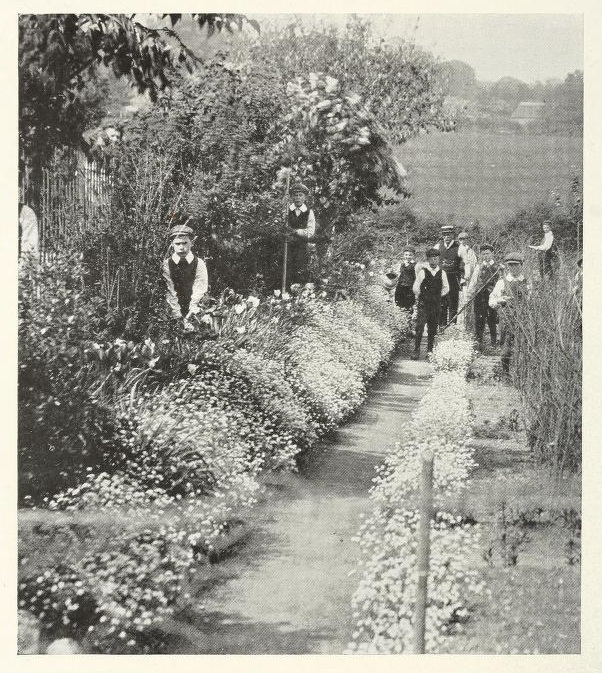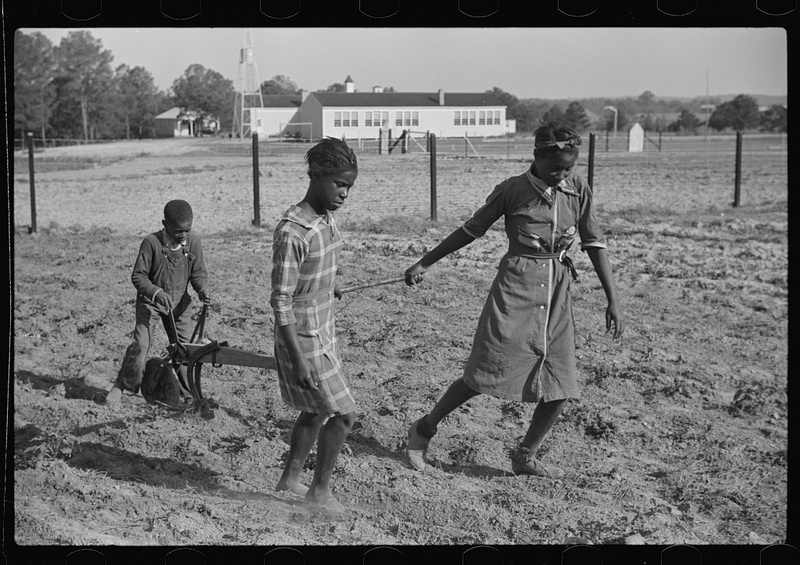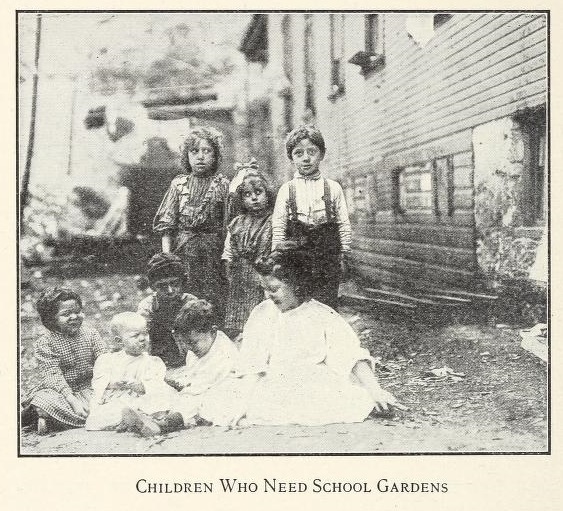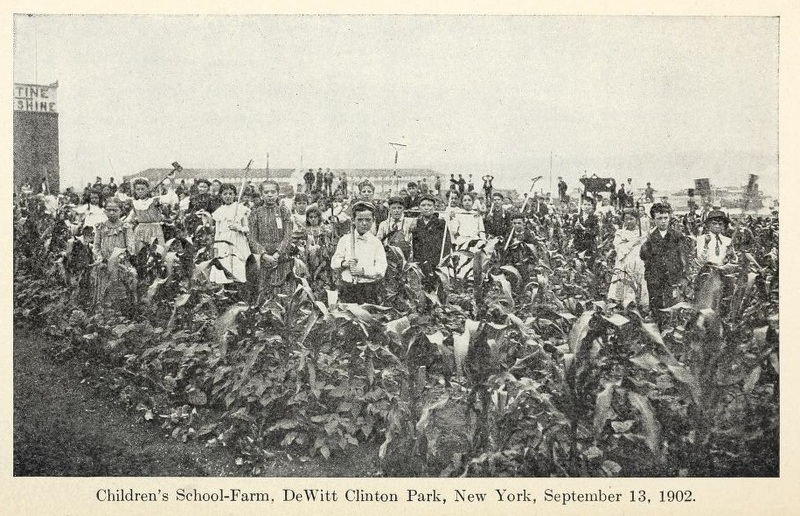Urban and Rural School Gardens
Many publications pointed out the differences in nature and purpose between urban and rural school gardens:
"It is obvious that no set rules can be laid down for the management of a school garden. In the heart of a city the work may be an entirely different thing from what it is in a rural or semirural district. In the city the main idea may be an aesthetic one combined with moral and physical training. The general trend of the work in this country is practical, so that its application will eventually have more or less effect on our industrial development. Manual training has been made a feature in many of our schools, and no one will deny that valuable results have been obtained from it."
Galloway, B. T. (1905) School Gardens: A Report Upon Some Cooperative Work with the Normal Schools of Washington, With Notes on School-Garden Methods Followed in Other American Cities. Office of Experiment Stations, Bulletin Number 160, p. 7
In School and Home Gardening: A Text-Book for Young People, Kary Cadmus Davis pointed out some of the benefits of gardening for the child in the country:
"The effect of the garden in the country is to fill the mind of the child with thoughts which are elevating and not degrading. Idle hands and leisure hours are as bad for the country children as for others. The wholesome refinement of the garden fills the place of vulgar twaddle. Country children learn to love their future life occupation. They find it has a scientific foundation."
Davis, Kary Cadmus (1918). School and Home Gardening: A Text-Book for Young People. Philadelphia: J.B. Lippincott Company, p. 4
L.C. Corbett contended that gardens in country schools should be very different from those in city schools because rural children were already intimately familiar with basic agricultural elements and processes:
"As a rule, children in rural districts are familiar with the fundamental operations of the garden — preparation of the soil, planting the seed, and the cultivation and harvesting of the ordinary garden and farm crops. To attempt, therefore, to maintain the ordinary type of individual vegetable and flower garden upon the grounds of rural schools would undoubtedly be an unwise expenditure of time and energy....
The plan of procedure, therefore, for teachers in rural districts, should be quite different from that followed by those in urban communities. The teachers of the rural schools will find a most fruitful field along the line of laboratory experiments, which will demonstrate the principles of plant growth and of plant nutrition, methods of propagation, etc....
In rural communities, instead of conducting miniature vegetable or flower gardens, it might be better to secure different varieties of grains or grasses for test upon home plots, encouraging the students to undertake small experiments which shall have for their chief end the development of the faculties of observation. Different methods of tillage and fundamental principles of this character will be involved in these experimental or demonstration areas, the results of which will emphasize the importance of certain lines of work."
Corbett, L.C. (1922). The School Garden. U.S. Department of Agriculture. Farmers' Bulletin, Number 218, p. 3
Maria Louise Greene made the case for the teaching of gardening to city children:
"Perhaps best of all is that the teaching of the saner and sweeter side of life which comes when the school garden takes the child off the city streets, away from crowded alleys, vicious surroundings...when it finds happy work for idle hands, health for enfeebled bodies, and training for the will and affections."
Greene, Maria Louise (1910). Among School Gardens. New York: Charities Publication Committee, p. 37
 An official website of the United States government.
An official website of the United States government.





